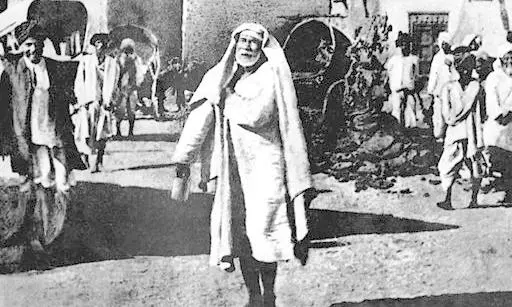
- Home
- India
- World
- Premium
- THE FEDERAL SPECIAL
- Analysis
- States
- Perspective
- Videos
- Sports
- Education
- Entertainment
- Elections
- Features
- Health
- Business
- Series
- In memoriam: Sheikh Mujibur Rahman
- Bishnoi's Men
- NEET TANGLE
- Economy Series
- Earth Day
- Kashmir’s Frozen Turbulence
- India@75
- The legend of Ramjanmabhoomi
- Liberalisation@30
- How to tame a dragon
- Celebrating biodiversity
- Farm Matters
- 50 days of solitude
- Bringing Migrants Home
- Budget 2020
- Jharkhand Votes
- The Federal Investigates
- The Federal Impact
- Vanishing Sand
- Gandhi @ 150
- Andhra Today
- Field report
- Operation Gulmarg
- Pandemic @1 Mn in India
- The Federal Year-End
- The Zero Year
- Science
- Brand studio
- Newsletter
- Elections 2024
- Events
- Home
- IndiaIndia
- World
- Analysis
- StatesStates
- PerspectivePerspective
- VideosVideos
- Sports
- Education
- Entertainment
- ElectionsElections
- Features
- Health
- BusinessBusiness
- Premium
- Loading...
Premium - Events

Sai Baba urged people to worship their family deity, to believe in God, and to love their parents, Guru and the downtrodden; how can his idol hurt Hindu sentiments?
It was in March 2021 that a group of men described as “locally powerful” dismantled an idol of Shirdi Sai Baba from a Hindu temple in south Delhi and replaced it with a marble image of Lord Ganesha.
They did not touch any other idol. In a video which went viral, a Padam Panwar was heard saying: “We are removing the Sai Baba idol as he is not a God… He was a Muslim.”
For good measure, he and his group added that they had consulted all the neighbours and devotees before doing what they did.
The residents knew
The truth was very different. The dominantly middle-class area of Shahpur Jat was in shock when the residents realised what had happened.
Hundreds, mostly women, were regular visitors to the Lord Shiva temple and prayed to Shirdi Sai Baba too with devotion. For them, he was a saint who continues to bless and protect his devotees. Every single person who felt upset over the injustice to the idol was a Hindu.
The residents knew those behind the communally-tinged mischief. The men wielded clout.
Connecting the dots
When journalists visited Shahpur Jat, the discontent among the people was evident. But almost everyone who expressed their disgust preferred to speak within the safety of their homes. It was clear the people were afraid of those claiming to act on their behalf.
Eventually, however, some residents gathered guts and complained about the sacrilege to the police.
As the incident became news and the police summoned the guilty, they changed their tune. The men now claimed they removed the idol as it was broken and praying to broken idols was not right.
But the locals knew better. The video was proof that Panwar and his group viewed Shirdi Sai Baba as a Muslim. They also knew that the men were linked to a self-styled godman outside Delhi at whose ashram a Muslim boy had been assaulted for drinking water in the premises. The dots could be connected.
Projected as ‘villain’
Those in Tamil Nadu now demanding the removal of Shirdi Sai Baba idols from government-managed temples are no different from the men who uprooted his idol in Delhi. It is not surprising that a petition filed in the Madras High Court insinuates to the Sai Baba being a Muslim and his supposed references to Allah.
Shirdi Sai Baba is seen as a ‘villain’ by many in an eco-system uncomfortable with Hindu eclecticism. This is probably because the widely revered saint is dubbed by some as a Muslim by birth.
The reality is no one knows for sure his origins. Many feel he was born into a Muslim family but raised by a Hindu couple long before he made his appearance in Shirdi, Maharashtra. There are others who say the man called Sai Baba was born as Haribhau Bhusari.
Irrespective of his origins, the Shirdi Sai Baba is today worshipped as a saint in the best traditions of Indian culture by millions in the country and beyond. Although his followers include men and women across religious divides, Hindus today form the overwhelming majority of his devotees.
Innumerable small and big shrines dedicated to him exist all over India and continue to spring up. His Samadhi at Shirdi – which was a nondescript hamlet before the Sai Baba’s arrival – is now one of India’s most frequented pilgrimage sites.
Unpretentious saint
Sai Baba was aged between 25 and 30 when he came to Shirdi for the first time, between 1868 and 1872. He made the outskirts of the village his home for some 22 years and lived under a neem tree for another four to five years before shifting to a dilapidated mosque. A woman who sustained him with offerings of food in the early days was Bayajabai, wife of Narayan Teli.
The man who first recognised his worth and called him a chintamani (gem) was Gangagir Bua, a holy man from the Vaishnava sect. In no time, the Sai won over a large following that kept expanding due to his piety, self-realisation and spiritual powers.
He was around 80 years old when he passed away in 1918. The most prominent Indian who met him a year earlier was Bal Gangadhar Tilak.
Behind the following
How and why did Sai Baba achieve such a following? He was without doubt a unique and unpretentious saint. He followed no conventions. He wrote no critique of holy books, was never seen reading, gave no spiritual discourse, had no pretentions to scholarship, and often spoke in parables. He founded no ashram.
He, however, had great insight into both Hindu and Muslim scriptures. He certainly did not preach Islam and did not direct his followers to any particular God or Prophet.
In their widely acclaimed biography “Sai Baba of Shirdi” (by 2012 it had gone into 23 editions), reputed writers MV Kamath and VB Kher make no mention of his supposed Islamic origin. But they note that he attracted people of all faiths due to his simplicity. Indeed, nothing he preached was even remotely controversial.
Sai Baba's teachings
His teachings, from among a vast reservoir, were: Surrender the fruit of action to Him so that action will not harm or bind you; do not engage in controversy; do not speak ill of others; do not give tit for tat as each person is answerable for his actions; read sacred texts; be moderate in your food and recreation; be content with your lot; do good and God will bless you; without unflinching faith and patience, you will not see Him; one who has His grace is silent, one who falls from grace talks too much; do not covert others’ wealth; be humble; if you do good, good will follow; if you injure others’ feelings, I suffer; members in a family are bound to have differences but do not quarrel; the beginning of service is silence and meditation; be hospitable to anyone who comes to you; I love devotion; look up to me and I will look after you… One can go and on.
These are part of the teachings – repeated over and over to those who flocked to him – that transformed a man who resembled a rustic villager into a widely revered saint.
He was known to take up the karmic suffering of devotees to give them relief. He urged people to worship their family deity. He taught people self-restraint, to live with detachment, to believe in God, and to love one’s parents, Guru and the downtrodden. How can such a holy man hurt Hindu sentiments?
Travesty of truth
Can anyone have any quarrel with any of Sai Baba’s teachings? Indeed, he said or preached nothing that saints in the Hindu lineage did not.
The reason sections of Hindus are unhappy with Shirdi Sai Baba is because he resembled a Muslim fakir and preached inclusivity.
In doing so, he was akin to some of the Shankaracharyas of Shringeri and Kanchipuram who asked devotees not to discriminate between people on the basis of religion or other social categories.
Some of them advised Muslims and Christians who wanted to become Hindus to stay loyal to their own religion, underlining that their spiritual salvation lay in the faith they were born into.
Bothered by inclusivity
It is this inclusiveness that bothers some Hindus. In the case of Shirdi Sai Baba, it is easy to flaunt his supposed Islamic past and looks knowing that his early days are a mystery, at best controversial. Little value is placed in the fact that millions of Hindus have embraced the Shirdi saint as one of their own.
This then is the difference between Hindus who advocate toleration and inclusivity as a matter of faith and fanatics who always try to draw a line between ‘us’ and ‘them’.
This is why former President, late APJ Abdul Kalam, a Muslim, was attracted to the Kanchipuram mutt at whose entry stands a small mosque and whose presence caused no heartburn to any of the saffron-robed personages who presided over the Kamakoti peetam.
One may not want to pray to Shirdi Sai Baba but to say prayers offered to him in a temple, in any shrine, hurts Hindu sentiments is a travesty of truth.


